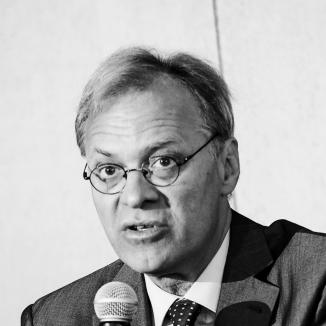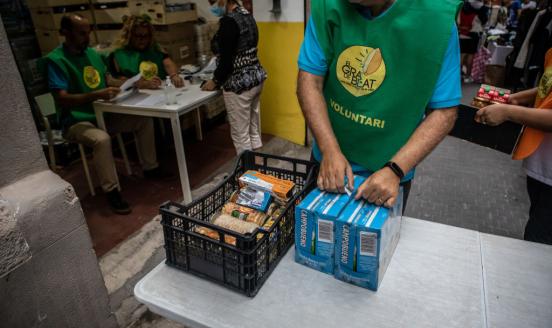Fleeing the flood: is the EU ready for climate migration?
How should EU policymakers tackle the growing problem of climate migration?
Speakers
Maria Demertzis
Senior fellow
Jane Linekar
4Mi Global Coordinator, Mixed Migration Centre
Rainer Münz
Migration expert
Professor, Central European University
Joakim Palme
Committee chair, The Swedish Migration Studies Delegation (Delmi)
Professor, Uppsala University
Martin Taschner
Head of the Migration Management Preparedness unit, European Commission, DG HOME
Key takeways
- Framing the issue correctly is key: despite popular narrative, evidence shows that current climate migration occurs almost exclusively within countries, rather than cross border, and that most displaced climate migrants return to their places of origin.
- Since current cycles of displacement-and-return migration take place locally, there should be a focus on regional and local policy. Policy should also focus on preparing for natural disasters and adapting to gradual environmental degradation.
- There is a need for more knowledge and data to understand what future scenarios are likely. Current projections of climate migration flows vary wildly, making policy planning difficult.
Summary
In his presentation, Rainer Münz presented the main findings of Delmi’s Research Overview on the complex relationship between climate change and migration. Münz highlighted two key drivers of increased migration: natural disasters and more gradual changes in habitat (eg, rising sea levels), which have different causes and reversal timelines. Natural disasters have caused the displacement of 342 million people since 2008, but it is very rare that this leads to cross-border migration in the absence of other factors, such as failed states. Furthermore, 98% of those displaced have since returned home. The impact of gradual changes is more difficult to measure, and forecasts are uncertain, but two things are clear. Firstly, environmental degradation has played a role in over 2 billion people moving from rural to urban areas over the last 40 years. Secondly, gradual changes impact low-income countries disproportionately: out of those living below 5 meters above sea level, there is a 68% risk of displacement for poorer nations compared to 3% for richer nations.
Jane Linekar highlighted that the findings of the report juxtapose the current narrative surrounding climate mobility.
“A lot of the narratives are about expectations of a flood of migrants crossing regions and arriving in more high-income countries. The narrative that predominates is not accurate and is not helpful in looking for solutions and finding policies that will help in response to climate mobility.”
Jane Linekar
It is important to pursue policy on local basis and plan for the challenge of urbanisation, not just in big cities but in secondary cities and smaller urban contexts, which will become home for more and more internally displaced people. Linekar also emphasised that increased gradual environmental degradation will lead to more permanent migration.
In the context of the high rate of return migration following natural disasters, Martin Taschner highlighted that preparedness for such events is key. It reduces the response time of aid, but also the cost: preparedness costs are 5 times lower than response costs. He also stressed the need for data collection and synthesisation of information to better forecast climate mobility, emphasising that much more must be done in this area.
“Scenario building is key.”
Martin Taschner
This fed into Rainer Münz’s point that many models and forecasts of climate migration come from climate scientists and not migration experts, not necessarily producing the best results on which to enact policy.
Joakim Palme reiterated that the scale of international migration is not significant, but that does not mean that it will stay that way in the future. In addition, it should not justify neglecting to aid internally displaced people. We already see great internal displacement in poorer countries, which from an ethical perspective should be important, given that Europe has played a large role in contributing to emissions. He also emphasised the need for regional cooperation since neighbouring countries will face similar threats.
The Q&A ultimately echoed the preceding messages: under such great uncertainty on future migration patterns, long term planning and developing resilience in affected communities are key to ensure people can stay where they would like to for as long as they want.
Notes by Luca Moffat.








